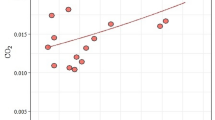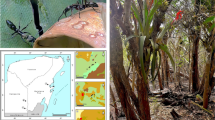Abstract
THE nest illustrated in Fig. 1 was removed from one of the ends of the top horizontal framework of an electricity transmission tower near Colenso, Natal, in April, 1933. These towers are some thirty feet in height. The nest proper, consisting of branches, twigs and dried grass, was built in a stout wire basket, some twenty-three in. in diameter. The crows (pied crow, Corvus scapulatus, Daud.) picked up odd scraps of wire to form the basket, and they bent some of the pieces round the 2-in. angled iron of the tower in such a manner as to fix the nest very securely. The kinds of wire so used were: No. 8 hard-drawn copper; Nos. 8 and 6 galvanised iron; No. 14½ baling; No. 14 2-strand barb-wire. The total weight of the nest is 20 lb.
This is a preview of subscription content, access via your institution
Access options
Subscribe to this journal
Receive 51 print issues and online access
$199.00 per year
only $3.90 per issue
Buy this article
- Purchase on Springer Link
- Instant access to full article PDF
Prices may be subject to local taxes which are calculated during checkout
Similar content being viewed by others
Author information
Authors and Affiliations
Rights and permissions
About this article
Cite this article
WARREN, E. Wire Nests of Crows. Nature 132, 29–30 (1933). https://doi.org/10.1038/132029a0
Issue Date:
DOI: https://doi.org/10.1038/132029a0
This article is cited by
-
Fluorination of Organic Compounds: Monofluoracetone
Nature (1933)
Comments
By submitting a comment you agree to abide by our Terms and Community Guidelines. If you find something abusive or that does not comply with our terms or guidelines please flag it as inappropriate.



